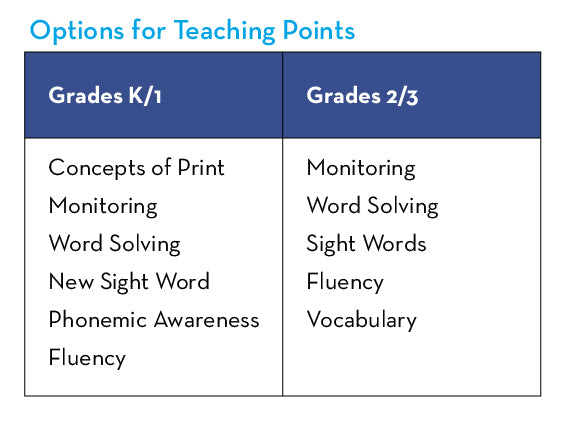Shared Reading: A Powerful Literacy Experience, In-Person or Remote
By Jan Richardson, Karen Cangemi, and Michèle Dufresne
Whether you are working with students remotely or in person, you need to provide a combination of instructional experiences that will help all your students build a strong processing system. Shared reading gives teachers the opportunity to explicitly model strategies and skills that will help expand readers’ competencies.
Shared reading provides an opportunity for students to hear and interact with on-grade-level text. During shared reading, you can introduce readers to a variety of genres and text features. You can model strategic actions and fluent reading as you teach vocabulary and comprehension strategies. You can engage and increase student participation in the shared reading experience by including opportunities for echo, choral, and cloze reading. The same book can be used for several days. Rereading the book provides students with opportunities to learn new skills and strategies. Through shared reading, you can build students’ confidence and motivation for reading.
Materials
- Large dry-erase easel or board and marker (Purchase Here)
- Large magnetic letters or letter cards (Purchase Here)
- Sound Box template (Purchase Here)
- Analogy Chart template (Purchase Here)
- Chart paper or interactive white board (Purchase Here)
- Digital Book Closet or appropriate books for your students (More Info Here)
Creating the Lesson Plan


Select a Text
Choose a text that is at the instructional grade-level expectation for that time of year. Make decisions based on the strengths and needs of your students.

Introduce the New Book
- Read the title and author’s name. Invite students to make predictions based on the title and cover illustration.
- Provide a hook or other motivation for reading the book.
Read the Book
- As you read, point to each word. Keep your pace natural but slow enough for all readers to follow along.
- To increase engagement and to support students who may find the text challenging, determine pages or parts of the text to either choral, echo, or cloze read.
- Model fluency skills.
- Engage students. Pause three to four times to invite students to share their thinking related to the instructional focus.
Discuss the Book
Invite students to talk about the book. Use your instructional focus to guide the discussion.

Teach
After you read and discuss the book, select one or two teaching points that students can use when reading books independently.


Reread the Book
Reread the book one or more times. Each time you read, students will become better able to read along and build fluency. You can select a different instructional focus for the repeated readings.
Write about the Book
Support students as they write about the book. You might do interactive, shared, or independent writing.

Follow-Up Activities
Provide students opportunities to revisit the shared reading text.
- If you have a hard copy of the book, place the book in the reading center for students to read with a buddy.
- Assign the digital book so students can read it with or to a family member.
- Make a recording of students reading the book, and place it in the listening center along with a copy of the book (if you have a hard copy).
- Have students draw a picture and write about their favorite part in the book or about something they learned.
- Write the dictated sentence on a sentence strip. Cut it up. Place the cut-up sentence in the reading center or send the sentence home for students to remake.
- Have each student write a page to make a class book about the topic.
You can download a Grades K/1 lesson plan here and a Grades 2/3 lesson plan here to help you plan your own dynamic lessons!
To learn more about shared reading, here is a link to a recent webinar presented by Jan Richardson and Karen Cangemi: Using the Digital Reader to Create Engaging Shared Reading Lessons.

